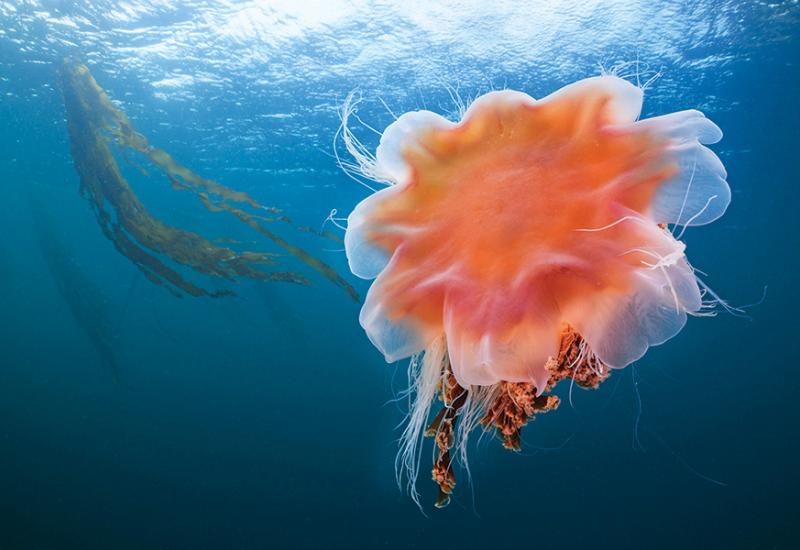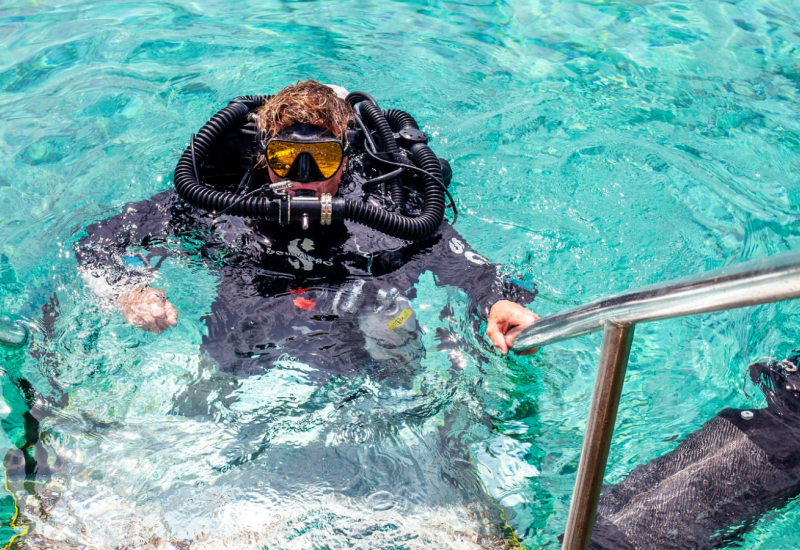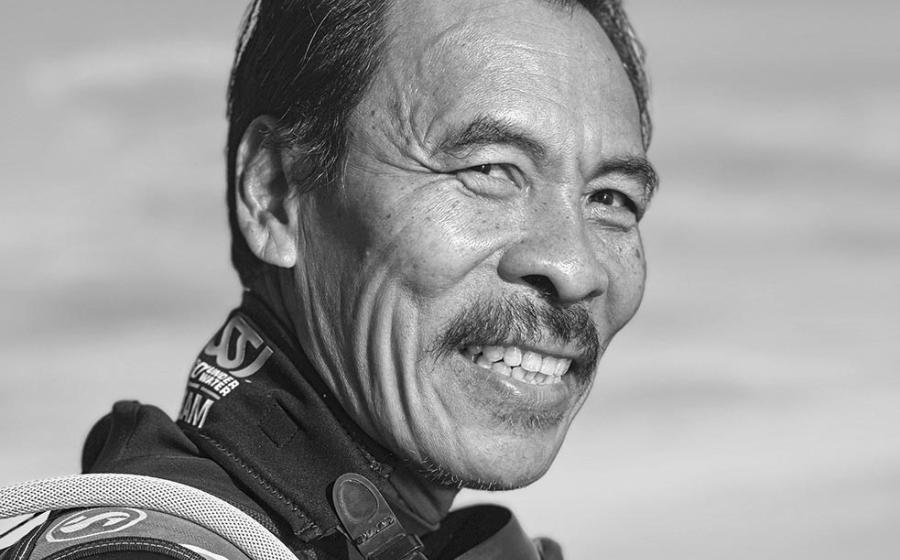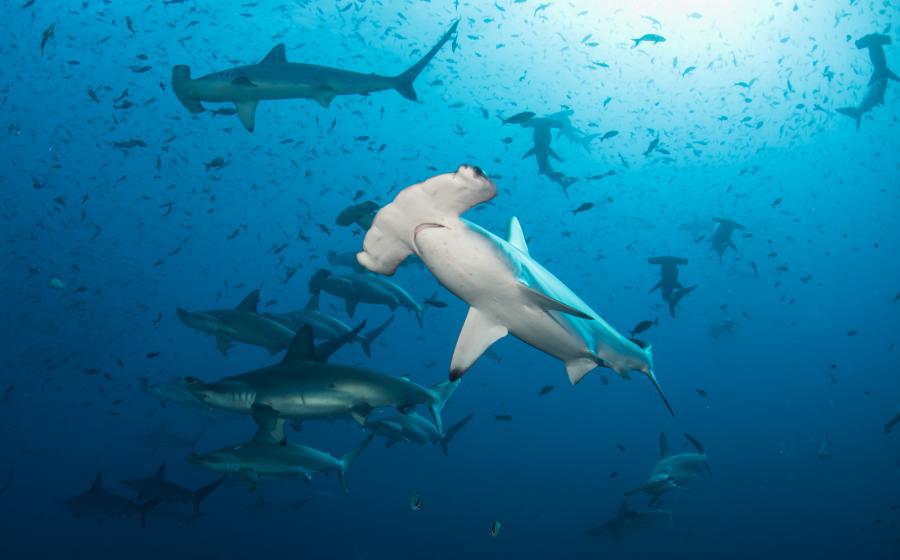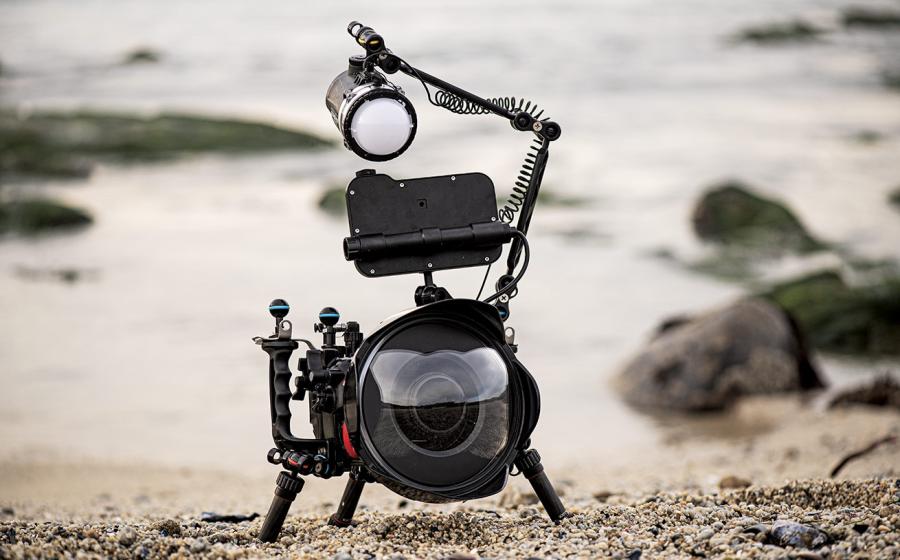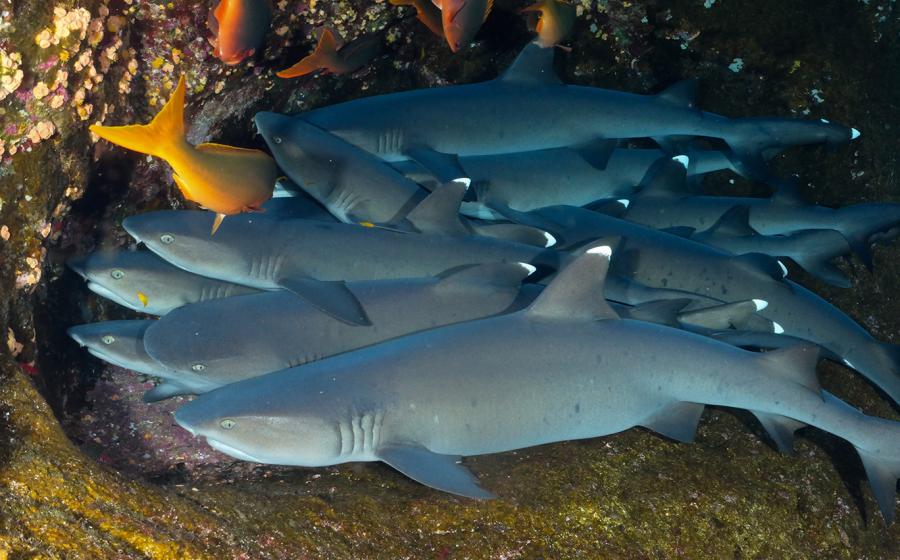The Isla Mujeres Dive Shop Leading Ocean Cleanups
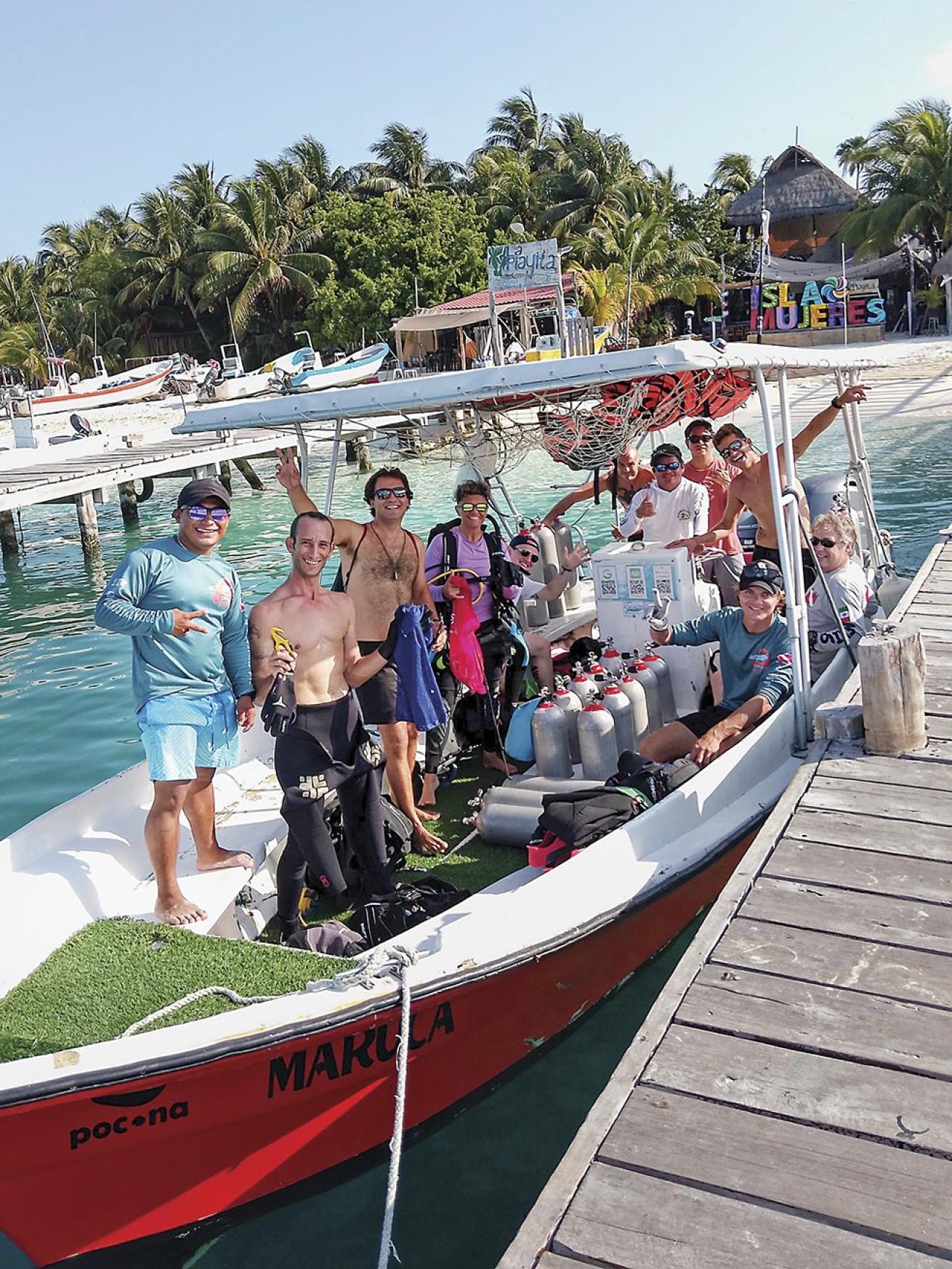
Courtesy Pocna Dive CenterA group of eager divers is ready to explore Isla Mujeres’ crystal-clear waters with Pocna Dive Center.
Just 8 miles off Mexico’s mainland, the friendly island of Isla Mujeres calls to divers seeking coral-encrusted shipwrecks, vibrant reefs, fevers of spotted eagle rays, majestic whale sharks and the world’s largest underwater museum. With its white-sand beaches and a lively town center adorned with colorful murals, it’s an easy destination to spend time during surface intervals.
On the northern tip of this nearly 5-mile-long island sits Pocna Dive Center, the only PADI Five Star IDC Dive Center and PADI Eco Dive Center on Isla Mujeres.
Established in 2012, the dive center started with one boat, one tricycle, 10 sets of dive gear (tanks were rented) and three staff, one of whom was a determined diver, Tracy Gunn. Gunn had lived in a camping tent among smiling backpackers and shady trees at Pocna Hostel campground, volunteering in various roles as a bartender, receptionist, yoga instructor and any other position that needed a helping hand. When the hostel built a pool, Gunn approached the manager and asked, “What about a dive center?” And so Pocna Dive Center was born.
Related Reading A Complete Guide to Diving in Colombia
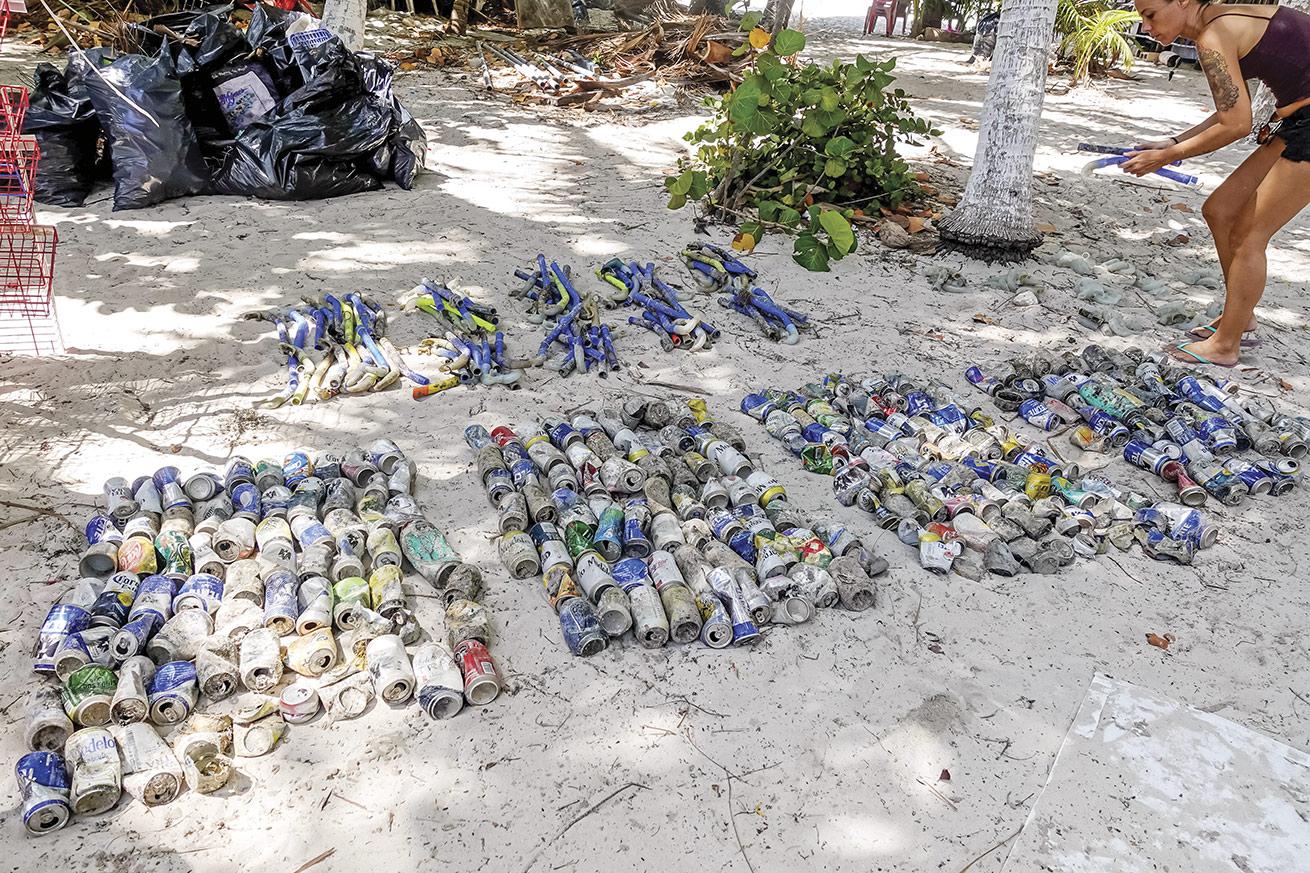
Courtesy Pocna Dive CenterThe result of a successful marine-debris cleanup.
Quickly, divers from around the world came to dive the clear waters of Isla Mujeres, many returning to Pocna Dive Center, drawn to its welcoming atmosphere.
“I believe that if you run a dive center, you have to give back because it tends to be a one-way street otherwise,” says Gunn. This ethos has led the dive center’s multifaceted conservation approach, which involves the local community, divers and scientific researchers.
Pocna Dive Center is a participant in the PADI AWARE program, which offers specialty courses in marine conservation. Divers can participate in underwater debris surveys through the Dive Against Debris specialty or expand their knowledge with courses like PADI’s Coral Reef Conservation, Fish Identification and Underwater Naturalist.
As part of the Adopt the Blue initiative, the center monitors local dive sites, documenting fish populations, reef health, coral bleaching and pollution levels. Data collected from such efforts has helped many dive centers worldwide advocate for marine protected areas where fishing is restricted or banned.
Divers who gain their PADI AWARE specialties often submit the fish population data they collect to Reef Environmental Education Foundation (REEF). Gunn notes that this data gives a clear picture of fish populations in the past and present, and what future projections look like.
Every year on Earth Day (April 22), Pocna Dive Center joins forces with Acción Isla and other community members for a large-scale island cleanup. In 2016, their first year participating, divers removed over 2,000 pounds of trash—including car batteries, cans, bottles and tires—from beneath the island’s boat docks.
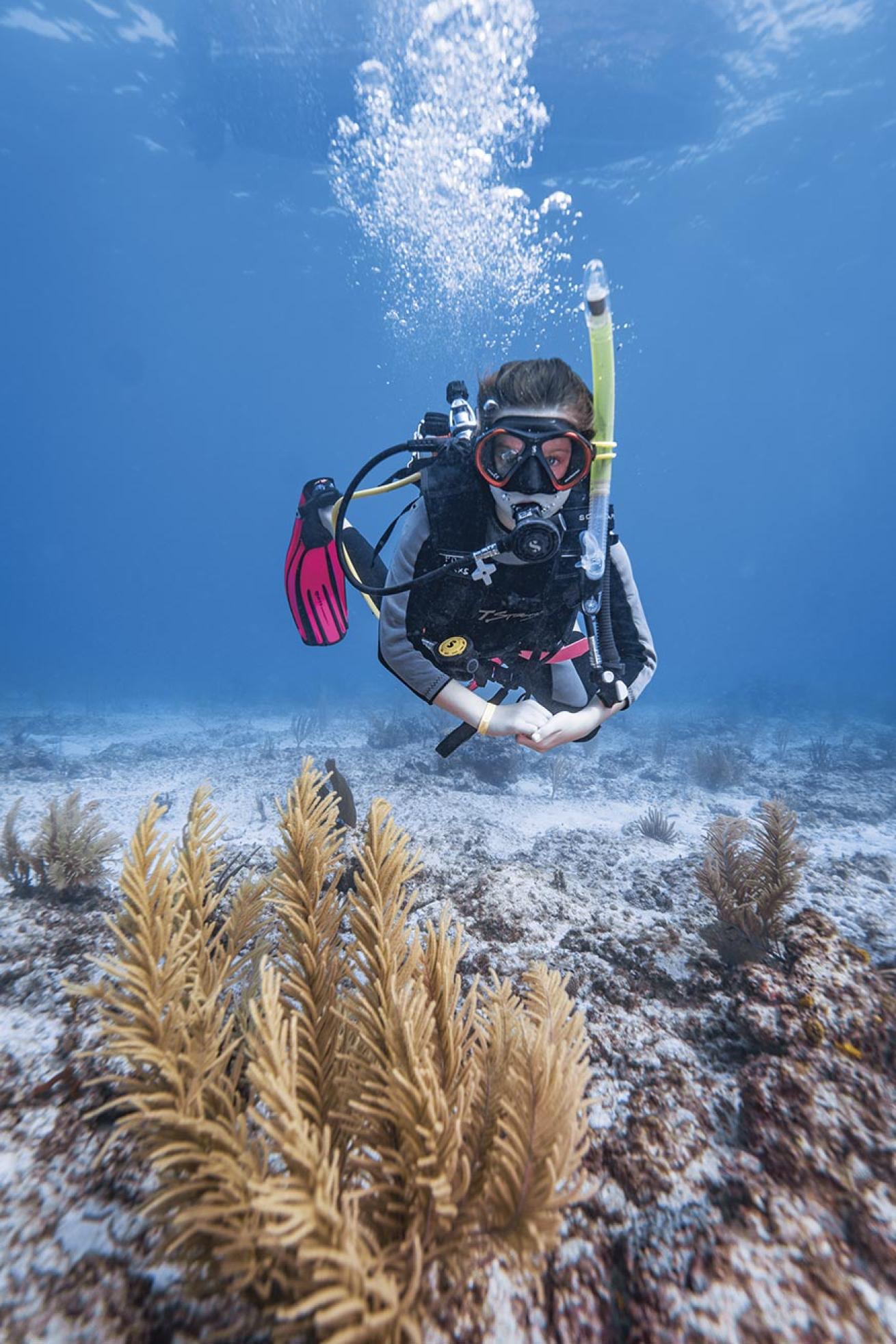
Courtesy Pocna Dive CenterNot a scrap of debris as far as the eye can see.
Thanks to these efforts, the waters are nearly free of debris. “There’s almost nothing. It’s so cool.” Cleanup results are logged on PADI’s Dive Against Debris Map, which researchers use to analyze pollution sources.
Away from the docks and into the blue, the waters surrounding Isla Mujeres are some of the best in the world for diving with graceful spotted eagle rays.
“You get massive fevers of spotted eagle rays in the area—40, 50, 60 at a time— right off the Gunboat 55 and 58 shipwrecks,” says Gunn. Seeing these winged creatures in such numbers is an ethereal experience. Divers with cameras can submit photos and videos to the Spotted Eagle Ray Project. Researchers use these images to track individuals based on their unique spot patterns, akin to human fingerprints, turning what would be a photo souvenir into valuable scientific data. The migratory patterns and behaviors of eagle rays are relatively unknown, but with the help of citizen scientists, marine researchers are learning more about them.
Isla Mujeres has an intriguing history. It was deemed a sacred island of womanhood and fertility by the Mayans, and was colonized by the Spaniards in the 16th century. Gilded statues of the Mayan goddess Ixchel throughout the island spurred its Spanish name, Isla Mujeres (“Island of Women”). During the next few centuries, the island was frequented by pirates and ruffians. In the 1950s, tourism boomed. All the while, Isla Mujeres was an island of fishing families who hauled their catch to mainland Mexico.
Today, Pocna Dive Center invites these local families to explore scuba diving through its Ambassadors del Mar (Ambassadors of the Sea) program. Originally launched as Jóvenes del Mar (Young People of the Sea) to train local youth, the initiative quickly expanded to entire families, including fishermen from centuries-old fishing lineages.
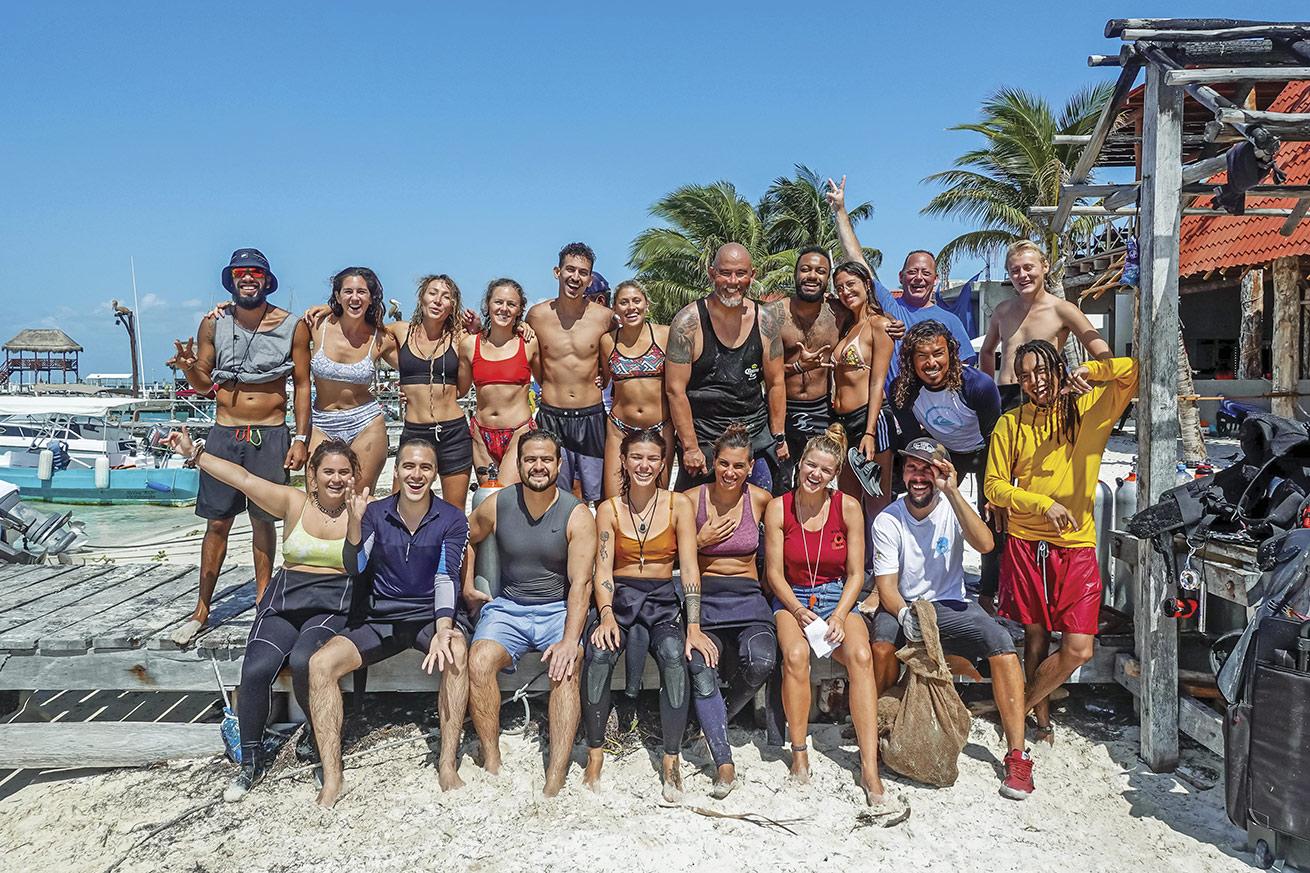
Courtesy Pocna Dive CenterIt’s eager volunteers like these divers who help keep Isla Mujeres so pristine.
Local children learn to scuba dive and gain an understanding of their marine environment, some later train as junior divemasters who teach the next generation about ocean conservation. Older generations leverage their deep knowledge of the sea, combining it with new diving skills to build careers in dive tourism. PADI provides assistance through sponsorships and learning materials.
As Isla Mujeres develops, residents can become dive industry professionals, which may be more sustainable, economically and environmentally, than working in the fishing industry. Because Pocna Dive Center has a swim school, even residents who don’t know how to swim can gain that foundational skill before continuing their diving journey.
Divers are some of the first to notice underwater environmental shifts, from coral bleaching to marine pollution. Understandably, more want to dive in destinations where they can contribute to its conservation with each dive. At Pocna Dive Center, divers have many ways to participate in these efforts, from PADI AWARE specialty courses to dive cleanups to marine animal data collection—all in warm tropical turquoise waters.

By the Numbers
Tracking eagle rays is an expensive process, but it’s a necessary measure to better understand these animals and their environment. Without the help of volunteer citizen scientists, the Spotted Eagle Ray Project would only have a fraction of its total data—citizen scientists accounted for 80 percent of all reporting.



